I. All the Water There Is
Here’s a concept: paper water. Paper water is water the government grants certain farmers who are drawing water from a river or a watershed in, say, California. The phrase describes the water the farmer, under premium conditions, is entitled to. Practically, however, paper water is mostly notional water, conceptual water, wish water, since over the years California has awarded many times as much paper water as there is actual water—which, to distinguish it, is quasi-legally called wet water. Some paper water might be made real during years of exceptional abundance, but most of it will forever be speculative and essentially useless, since it can’t realistically be traded, having no value. Paper water thus amounts to a type of hypothetical currency, backed by the Bank of Nowhere, Representing Nothing since 1960 (or thereabouts), when modern water troubles arrived in America and especially in California, where the wildly expanding citizenry required new state and federally managed water systems run by Watercrats.
Paper water is also a signifier of a domestic and global concern called peak water, a term proposed in 2010 by the hydrologist Peter Gleick in a paper he wrote with Meena Palaniappan that was published in Proceedings of the National Academy of Sciences.Gleick meant the phrase to be applied to worldwide circumstances, such as those that currently prevail in Cape Town, South Africa, where, as a result of a ferocious three-year drought, the taps might before long run dry, possibly in 2019—Day Zero, it’s been called.
The Colorado Rover Delta, in Northern Mexico, photographed in 2018. Most years, nearly all the river’s water is diverted long before it reaches the delta. Ronald de Hommel
The U. S. is also afflicted. In fact, Gleick regards California, with its relentless, outsized, and wildly conflicting demands on water, as a “laboratory for all of peak water’s concerns.” Peak water derives conceptually from peak oil, a phrase first used by a geophysicist named M. King Hubbert in 1956. Peak oil means that the planet has only so much oil, and that eventually it will grow sufficiently scarce that what remains will be too expensive to collect. Hubbert predicted that U. S. oil production would reach maximum output between 1965 and 1975, and in 1970 it did, but it has risen lately because of new means of recovering oil, such as fracking. Some people still believe in peak oil, and others think there will always be plenty of oil, because there is more we haven’t found yet.
That water was in a position similar to oil occurred to Gleick when people would ask if he thought that the world, with its population growing alarmingly and climate change causing certain places to become disastrously water-soaked (South Asia, Texas) while others (Cape Town, California) are water-starved, would ever use up its water. “My first reaction was ‘We never run out of water,’ ” Gleick says. “But there’s groundwater in China and India and the Middle East and in America in the Midwest and California that we really are using up just like oil.”
HAVING EVAPORATED FROM LAKES AND RIVERS AND OCEANS AND RETURNED AS SNOW AND RAIN, THE WATER WE CONSUME HAS BEEN THROUGH INNUMERABLE USES. DINOSAURS DRANK IT. THE CAESERS DID, TOO.
Water cannot be created or destroyed; it can only be damaged. When Gleick says we’ll never run out, he means that at some point, millions of years ago, there was all the water there is, a result of the law of the conservation of matter. Having evaporated from lakes and rivers and oceans and returned as snow and rain, the water we consume has been through innumerable uses. Dinosaurs drank it. The Caesars did, too. It’s been places, and consorted with things, that you might not care to think about. In theory, there’s enough freshwater in the world for everyone, but like oil or diamonds or any other valuable resource, it is not dispersed democratically. Brazil, Canada, Colombia, Peru, Indonesia, and Russia have an abundance—about 40 percent of all there is. America has a decent amount. India and China, meanwhile, have a third of the world’s people and less than a tenth of its freshwater. It is predicted that in twelve years the demand for water in India will be twice the amount on hand. Beijing draws water from an aquifer beneath the city. From being used faster than rain can replenish it, the aquifer has dropped several hundreds of feet in the last forty years, and in places the city is sinking four inches every year.
As for the world’s stock, however, nearly all of the water on earth is salty; less than 3 percent is fresh. Some of that is in rivers, lakes, aquifers, and reservoirs—the Great Lakes contain one fifth of the freshwater on the earth’s surface—and we have stored so much water behind dams that we have subtly affected the earth’s rotation; but two thirds of all the freshwater we have is frozen in the earth’s cold places as ice or permafrost, leaving less than 1 percent of the world’s total water for all living things. Much of that gets a rough ride. American ponds and streams and lakes and rivers contain fungicides, defoliants, solvents, insecticides, herbicides, preservatives, biological toxins, manufacturing compounds, blood thinners, heart medications, perfumes, skin lotions, antidepressants, antipsychotics, antibiotics, beta blockers, anticonvulsants, germs, oils, viruses, hormones, and several heavy metals. Not all of these are cleansed from water before we drink it.
There are two kinds of numbers, I believe, big ones and little ones, but here are some big ones by way of context: According to the World Health Organization, among the two billion people who have no drinking water provided to them, 844 million travel more than thirty minutes to a river or a tap, where they sometimes receive water contaminated by human excrement. Such water has the risk of diarrhea, cholera, dysentery, typhoid, and polio. Nearly 850,000 people die each year from diarrhea, a cruel circumstance in areas short on clean water, since diarrhea works its effects by means of dehydration. Bangladesh, India, Rwanda, and Ghana have some of the most tainted water.
Water collectors push their cart of water filled drums laboriously homewards in Ghana. Getty Images/Louise Gubb.
Stationarity, a term from statistics, applies to contexts in which the past predicts the future. When water experts say that we are “outside stationarity,” they mean that the slaphappy way that the world uses water has brought about so many unexampled circumstances, so many overburdened systems and areas of deprivation and depletion, that we cannot know how matters will unfold. Sometimes water specialists say that the earth is experiencing water stress. The Nile, the Rio Grande, the Yellow River in China, the Indus in Asia, and the Colorado (which sustains the American Southwest from Phoenix to Las Vegas to San Diego) are tapped out. The Ganges flows, but it’s unspeakably filthy.
With water, there are “distinct classes of water haves and have-nots,” according to Jay Famiglietti, who is the senior water scientist at the NASA Jet Propulsion Laboratory at the California Institute of Technology. (Earth science is part of NASA’s charter.) “The wet areas of the world are the high latitudes and the tropics, and the areas in between are getting drier,” he says. The supercharged hurricanes and typhoons that have resulted from global warming move water around within the regions that already have water but do nothing for the parched places. America has hot spots, too. California had its own Zero Day not long ago when, in Tulare County in the Central Valley, an area of corporate farms, something like a thousand wells went dry in towns such as East Porterville, meaning that more than seven thousand people found themselves occupying houses where you would turn on a tap and nothing came out. The water table has been diverted by means of deep wells and irrigation systems serving the sprawling farms. The county began delivering bottled drinking water, and there were free public showers. Water to flush toilets and do laundry came from tanks parked at the fire station. People filled barrels and hauled them home.
Neighbors distribute drinking water, talk about water issues as water wells supplying hundreds of residents remained dry in the fourth year of worsening drought on February 11, 2015 in East Porterville, California. Getty Images/David McNew.
A quarter of all the food grown in America comes from the Central Valley—oranges and grapes are raised in Tulare, along with dairy cows and cattle—so having it go even partially dry is not a small concern. “No one really knows what happens, if this were to get worse,” Famiglietti says. “Our water security, and therefore our food security, is at far greater risk than people realize. Aside from the crisis of humans not having water, we’re also going to be losing these major food-producing regions like the Central Valley. Agriculture will migrate to where the water is, maybe the southern parts of South Dakota and southern Idaho. There is already some agricultural migration to those regions.”
That may sound simple, relatively, a cultural shift, like the past migration of workers and jobs from the Rust Belt to the Sun Belt. However, climate change, with its disruption of the rain cycle, making severe storms even more severe and diminishing the snow pack in seasons of drought, makes it impossible to know which areas will remain stably wet. Cape Town is suffering now because “a once-in-a-millennium event,” as it has been described, has been occurring since 2015—scant rain in the region for three years.
In California, rain became scarce in 2011 and stayed scarce for five years. Sufficient rain fell during the winter of 2016 that the drought appeared to have ended, since people could see rivers running and reservoirs filled that had seemed nearly empty before. Water experts view the matter differently. They make a distinction between surface drought and groundwater drought. Five years of overdrafting in the Central Valley left a groundwater deficit that the rains didn’t replenish.
AQUIFERS THAT LIE BENEATH ROCK DEPOSITS OR IN GAPS BETWEEN THEM, AND ESPECIALLY ONES IN PLACES WHERE RAIN IS SPARSE, MIGHT NOT RECOVER IN A TIME FRAME THAT MEANS ANYTHING AGAINST THE MEASURE OF A HUMAN LIFE SPAN.
Aquifers commonly contain water that went underground thousands or millions of years ago and hasn’t come out since—it’s called fossil water. Groundwater, however, is as vulnerable to contamination as surface water. An overdrafted aquifer near a coast can have seawater seep into it and ruin it. Arsenic occurs naturally in rocks and can find its way into the water table, also ruining it. An aquifer near an industrial dump might be polluted by man-made chemicals. In the Central Valley, some wells are contaminated by nitrates, which come from fertilizer, leaky septic tanks, and big cattle-feeding operations; drinking nitrate-polluted water can bring about conditions such as blue- baby syndrome, in which the fingertips of babies turn blue from insufficient oxygen.
Finally, an overdrafted aquifer can be depleted. Whether it returns is a matter of how it was filled in the first place. Porous aquifers, ones beneath sand and gravel, as in the Central Valley, can recover with rain. Aquifers that lie beneath rock deposits or in gaps between them, and especially ones in places where rain is sparse, might not recover in a time frame that means anything against the measure of a human life span. In India, so many farmers have killed themselves from despair over disappeared groundwater, and the poverty it enforces, that there is a category called suicide farmers. In 2016, more than 11,300 farmers took their own lives.
III. See You in Six Thousand Years
Besides California, the other American place in water jeopardy is the High Plains, which sits on top of an aquifer called the Ogallala. The Ogallala is sometimes described as an ocean of groundwater. One of the largest known aquifers in the world, it runs from South Dakota to Texas, more or less in the shape of a monkey wrench. Near the top, in places, it is a thousand feet deep, and at the lower end, in places, there are areas where it is as shallow as only a few feet. The Dust Bowl, which played out above the Ogallala, was, in a way, a period phenomenon. All the water necessary to sustain the crops that now cover the plains was always there, but a few feet deeper than Depression-era farmers could reach with windmill pumps. Electric pumps, which only became widespread by the end of the thirties, made it accessible.
For decades farmers thought the Ogallala was inexhaustible. According to Scientific American, drawing on government studies, by 1975 the amount of water taken each year from the aquifer equaled the flow of the Colorado River, and now the annual draw is about eighteen times that amount. Farmers have been pumping out four to six feet a year in places where half an inch is being added. As far as continuing to be useful, the Ogallala might be exhausted by 2070. A reasonable estimate is that it would take six thousand years for rain to replenish it.
IV. A Water-Crisis Tour
Peter Gleick is sixty-one, and he looks like the scholar he is. He is tall and gangly, with a thin face and glasses, a gray beard, and wispy gray hairs that rise from his crown like solar flares. He grew up in New York City, where he was a Cub Scout and learned from his father to identify birds in Central Park. He went to Yale, then he moved to California and got a doctorate in energy studies from UC Berkeley. In 1987, he was one of four founders of the Pacific Institute, which specializes in water policy, and in 2003, he was named a MacArthur Fellow.
Toward the end of 2011, someone anonymously mailed him a private document from the Heartland Institute, a conservative think tank that denies climate change. The document described a plan to produce a curriculum for kindergarten through twelfth-grade students that disputed climate change. It also described the institute’s contributions to climate scientists who cast doubt on climate science. “I could have thrown it out. I could have sent it to a journalist,” Gleick told me. “But I chose to try to verify it myself.” He set up a Gmail account under the name of one of Heartland’s board members and asked Heartland to send him the institution’s most recent documents. What he received he dispersed to journalists, who published them. The Heartland Institute said that one of the documents was forged. Gleick wrote a piece in the Huffington Post acknowledging what he’d done and apologizing for his deception.
“My board was not happy,” he said. “I stepped down, they made an investigation that eventually supported my version, and I was reinstated.” Meanwhile, the Heartland Institute bought petergleick.com, where you can read “Why Isn’t Pacific Institute’s Peter Gleick in Jail?” Regardless, in 2016, Gleick stepped down after nearly thirty years as the Pacific Institute’s president and now spends most of his time writing in an office on the institute’s premises. He is considered to be an eminent authority on water issues around the world and is regarded as especially knowledgeable about California’s circumstances.
The Pacific Institute occupies a Victorian house among an enclave of such houses in Oakland. One morning I met Gleick there, and then we drove east to visit what he called some “peak water signifiers”—a sort of water-crisis tour.
We were going to a walnut farm first. On the way, as we passed rolling green hills, Gleick explained that there are three components to peak water, the first being peak renewable water. “A renewable resource is flow limited,” he said. “You never run out of it, like sunlight. Most water is renewable—rainfall, snowmelt, rivers—but in more and more places around the world, we’re running into limits brought on by peak use. The classic example is the Colorado River, hardly a drop of which ever reaches its delta, in Mexico, anymore. It gets used up entirely along the way.”
Even an overtaxed river like the Colorado is partly renewable. “You get more the next year when it rains and snows,” Gleick continued. “It’s not that there’s never water, but there’s a limit to how much you can take, and that limit, its peak, is the renewable flow of the resource.”
Zero Day: A dam near Cape Twon in March with almost nothing to dam. Getty Images/WIKUS DE WET
Gleick calls the second component of peak water peak nonrenewable water. “Just like peak oil,” he said. “An aquifer is not sustainable if humans pump it faster than nature charges it. The people in the Central Valley who have seen their wells go dry are experiencing peak nonrenewable water. There is still water there, but the groundwater level has dropped, and only the farms can afford to dig the deeper well. You could find other water for these people—you could hook them up to a municipal system that’s maybe hooked up to a river. No one’s dying of thirst. But we cobble together fixes when we run out. So you go back to this question: Are we running out of water? Yes, sort of, with nonrenewable resources, and yes, sort of, with renewable resources.”
The walnut farm was about fifty miles north of Oakland, in Winters. “More and more orchards are going in, because they make money,” Gleick said. “There’s a distinction between field crops—cotton, rice, wheat, and corn—which you plant every year, and permanent crops, like fruits and nuts. Permanent crops need permanent water. If you have a drought and you’re growing wheat or alfalfa, maybe you fallow your field for a year. But if you’re growing almonds, you’ve got to water these trees or they die, and it’s a twenty- year investment sometimes before they produce a crop. That puts more pressure on groundwater. The advantage with trees is you can use drip irrigation, meaning you can target the roots, and apply the right amount of water at the right time, because there are monitors in the soil. Drip irrigation is more efficient than flood irrigation, where you simply flood the field and hope you’re watering at the moment the crop needs it most.”
The walnut farm, Sierra Orchards, was owned by a forward-thinking farmer named Craig McNamara, who looks a lot like his father, Robert McNamara, the secretary of defense under Kennedy and Johnson. We bumped down mud roads in an electric cart, which McNamara drove, and we saw the trees and his drip-irrigation system and how it works with a computer program to let him know when the soil is dry, and at the bottom of a small declivity, we stood beside Putah Creek, which he draws from. Since the creek was running high, he was flooding some of his fields with creek water to restore the water table. Finally, McNamara showed us hedgerows he’d planted to attract insects and birds and a huge machine by a barn that was converting walnut shells into organic matter he could use for fertilizer. Bookkeeping is what goes on in most farm offices I’ve ever visited, but McNamara’s was like a command center where he could find on a computer screen what he needed to know about which square yard of his orchard needed water and which square yard had enough.
As Gleick and I drove away, he said that McNamara was noteworthy in trying to do more with less water. “The hedgerows and recycling shells, those are things that most farmers think cost money and don’t provide an immediate or obvious return. They’re smart from a sustainability point of view, but if you’re maximizing return, you don’t do them. That’s why his neighbor’s using pesticides. It’s more expensive to put in smart irrigation systems and soil-moisture monitors, but you make up the money by being organic.”
V. “Secret, Occult, and Concealed”
The way water is used in the Midwest and West, and elsewhere around the world, exemplifies a nineteenth-century principle called the tragedy of the commons. The tragedy of the commons means that when there is a resource available to everyone, and the resource is unregulated—in the nineteenth century it was the common land for grazing cattle—people will use it to their own advantage until it is consumed rather than conserve it to everyone’s advantage. It is a principle that still applies widely, to overfishing, say, in the North Atlantic, and the disappearance of cod. Several colloquial rules, made at the start of the twentieth century, govern water in the West, and sometimes they contradict one another. Where water is shared, from a river, say, the rule that usually prevails is “first pump, oldest pump” or “first in time, first in right.” These older rights are also called “senior rights” or “pre-1914 rights.” They mean that even if you are upstream of another farm, if the downstream farmer’s rights preceded yours, you can’t have water until he has all he wants. People without senior rights might get paper water.
California farmers who draw from wells don’t deal in paper water, since so long as the wells are on their property, the farmers are entitled to drill as deep as they like. In India, in parts of China, and in the U. S., with groundwater it’s the “law of the biggest pump,” which allows a farmer to drain the water from underneath his neighbor by drilling a deeper well, since groundwater doesn’t observe boundaries. So many treaties and arrangements and agreements govern water use in the West and have for so long that a court in 1861 wrote that the “secret, occult, and concealed” nature of the resource made it impossible to control. Impossible then, apparently impossible now, with voracious use in between.
VI. The Upside
By a sign at the entrance to the Harvey O. Banks Delta Pumping Plant, outside Tracy, Gleick pulled over and opened a map. Out the window was a broad expanse of brown cattails and a long reach of deep blue water with the sun shining on it and gleaming like a strip of chrome. “We’re here,” Gleick said, pointing on the map to an extensive line of blue running mostly east to west. “The mouth of the San Joaquin River, where the Sacramento and San Joaquin join. It’s the largest delta on the West Coast.”
Above the marsh, a red-tailed hawk slid across the sky like a skateboarder. “The third concept of peak water is peak ecological water,” Gleick went on. “Peak renewable and peak nonrenewable effectively describe the problems with supply and demand. A third problem, though, are the ecological damages that result from human use of water. Say we take more and more water from a river. We grow more food, we make more widgets, we get an economic benefit, but the ecological cost also grows as fisheries suffer and wetlands dry up. Eventually, the negative ecological costs outweigh the economic benefits. We define that as the point of peak ecological water.” Gleick pulled the car back onto the road and turned onto a blacktop leading to the pumping station, which we could see like a fort halfway up some hills, about a quarter mile ahead.
The San Luis reservoir is an artificial lake and the fifth largest reservoir in California. Water from the San Joaquin-Sacramento River Delta is pumped uphill into the reservoir and released to continue downstream along the California Aqueduct for farm irrigation and other uses. Getty Images/Christian Science Monitor.
Through pipelines and canals, the station sends water south from the delta as far as Los Angeles, which gets the bulk of its water from the north. The deltas and estuaries it draws from tend to be breeding and nursery areas for birds and fish as well as migratory stopovers for birds. “Taking water from the San Joaquin Delta,” Gleick said, “there’s longstanding, serious, peak-ecological- water concerns about salmon extinctions in the delta, other fish extinctions, and also how it acts on the Pacific flyway,” a major migratory route for birds that goes over the region.
From a slight movement of color in the field, he identified a meadowlark landing on a fence post, like one of those people who need only a few notes to name a song. “There is a field of study in ecology called ecological valuation,” he continued. “What’s the value of an endangered fish species, or worse, extinction? The fact that we’re bad at valuing those things doesn’t mean that there’s no value to them. Peak water should never mean that people are dying of thirst. If we get to that point, that’s a failure of governments. Instead, peak water’s going to be felt first by ecosystems and agriculture and economies. We’re already seeing peak-water constraints hurt our economies, especially with the drought, in farmers having to fallow land, which leads to unemployment.
“I think people in California have understood for a long time that our water system is not in balance,” Gleick went on, “but they see the problem through their own lenses. If you’re a farmer and you see salmon or the delta smelt as responsible for water being used in a way that doesn’t benefit you, you think you can do without the fish. If you care about the fish, you may think the farmer could grow something different, or the same thing differently, and use less water. Neither group talks to the other, but it’s a false dichotomy to think that the only way to solve the human water problem is to give up water for fish.”
Gleick believes there are two solutions—the hard path and the soft path, notions also derived from energy policy. The hard path wrings water from the environment mainly by means of dams and tunnels for transferring water and by desalinization plants. “It’s what World Bank guys and engineers are trained to do,” Gleick said. The hard path exemplifies twentieth-century thinking, which in turn was based on the nineteenth-century notions that resources were boundless and that science could control nature. There are still places to put dams, but dams are very expensive, and desalinization is too costly to be practical anywhere except places such as the Persian Gulf, where oil pays for it.
Hard path believes that no water should escape being used, and it is indifferent to the vitality of an ecosystem. By its reasoning, a depleted system can be shed for a new one, the way new oil deposits can be found. The discarded system will expire or recover, but the caravan will have moved on. An example is the Colorado River, the passage of which is so oversubscribed that only once in the last twenty years has the river reached its delta in Mexico with any flow.
Soft path involves conservation and tactics such as storm-water capture or wastewater treatment and reuse—twenty-first-century thinking, Gleick calls it. “We are already treating wastewater, stuff you flush down your toilet,” Gleick said. “We are not yet drinking that water, because we don’t need to. They drink it in parts of Africa and in Singapore, where they call it ‘new water,’ a means of branding it. We use it for nonpotable purposes: irrigation, cooling power plants, and restoring groundwater.”
Gleick turned into the parking lot of the pumping station, where there were only a couple of cars. “I’m a big fan of California agriculture,” he said, “but I’m also a big fan of ecosystems and reliable urban water supply. I think we can have a healthy agricultural economy and meet basic human needs for water and still save the fish, but not the way we’re doing things today.”
“What if things don’t work?” I asked.
“The dystopian vision, which I don’t think will happen, because I hope and think we’ll be smarter than that,” Gleick said, “but the dystopian future is one in which we lose more and more fisheries, the winter-run Chinook salmon go extinct, the delta smelt disappear, bird migrations plummet, the Salton Sea”—a saline lake fed by Colorado irrigation runoff—“disappears, and toxic dust spreads over southern California, the way it did when the city of Los Angeles drained Owens Lake. Plus a number of farms go out of production, and considering how reliant the country and the world are on California farms, the effect is widespread. Also, urban water gets more and more expensive, because we have to turn to desalinization, consequently more populations lack access to safe and affordable water, and we see more and more East Portervilles.
“WHAT MAKES ME OPTIMISTIC IS THAT IT’S OBVIOUS WE CAN DO THINGS DIFFERENTLY.”
“What makes me optimistic,” he went on, “is that it’s obvious we can do things differently. I would be doing something else if I didn’t have that optimism, although it’s tempered in two ways. One is, while I truly believe we’re moving toward sustainable water management and use, I think bad things will happen along the way. We’ll lose some things permanently, like species. The other thing is that not everybody will suffer equally. The rich can isolate themselves to some degree from climate change and water problems, but the poor will suffer. Those weren’t rich communities in the Central Valley that had their wells dry up.”
For several minutes, we stood beside the aqueduct and simply watched the water flowing south, the way people stare at a deep hole in the ground. Then Gleick said, “When you start butting up against peak-water limits, you have to start doing things differently. We’re not going to build many more big dams, and we’re overdrafting groundwater, but that will drive innovation. This is the direction we have to go. There’s no more new water.”
VII. The Downside
Earlier, Gleick had said, “In California, we have all the world’s water problems in one form or another. There’s one exception. We don’t really have violence, yet.” Elsewhere, they have their share. In 2016 in Darfur, seventy people were killed “in clashes between farmers and herders over access to water resources and land,” according to the Pacific Institute’s Water Conflict Chronology.
In recent years, many of the conflicts in which people have been killed over water have taken place in India. Some of the occasions involved protests over dams or canals, and some were farmer-versus-herder disputes. In 2014, in northern India, during a drought, a group of bandits announced that they would kill people who lived in villages near their hideout unless the people brought them water every day. Twenty-eight villages said they would take turns paying what they called a “water tax.” Indirectly, water affects civil migration, which in turn affects politics in the form of responses to migration, such as the rise in Europe of right-wing nationalism and the election in Italy in March of populist factions opposed to immigrants. Last year, speaking at the Vatican’s Pontifical Academy of Sciences, Pope Francis wondered “if we are not on the path towards a great world war over water.” People who think a water-conquest war is unlikely tend to point out how difficult it is to move water, but it isn’t any more difficult to move water than it is to move oil.
June 6, 2018: An Indian man waits for fresh water supplies to arrive with a truck at a water distribution point, in the low-income eastern neighbourhood of Sanjay camp in New Delhi. Getty Images/DOMINIQUE FAGET
Gleick thinks that water is less likely to cause a war than to be used as a weapon. In 2014, in the journal Weather, Climate, and Society, he published a paper called “Water, Drought, Climate Change, and Conflict in Syria.” He described the area’s water conflicts, which are ancient—the first, according to the Water Conflict Chronology, appears to have occurred forty-five hundred years ago when a king named Urlama diverted water through canals to deprive an enemy of it. More recently, climate change and the scarcity of freshwater resulting from a drought between 2006 and 2011 led to what one expert described as the “most severe set of crop failures since agricultural civilizations began in the Fertile Crescent many millennia ago.” Gleick’s paper discussed how all this encouraged the discontent that led to Syria’s civil war. “No one argues that climate change or drought caused the civil war,” he told me. “But they had an influence. And after the civil war started, there were massive and unrelenting attacks by pretty much all the parties on civilians and infrastructure, including, explicitly, water resources. Attacks on the water-treatment plants in Aleppo, attacks in Iraq on local water systems—use of water as a weapon. ISIS took over dams on the Tigris and Euphrates and released water on downstream villages to prevent attacks on their bases.”
“Water Wars” makes a fine headline, Gleick said, but he thinks any such conflict between nations would be more complicated. “India and Pakistan have been fighting forever over water in the region of Kashmir,” he said, “but if it breaks into war, water would only be a part of the cause. Egypt has threatened Ethiopia over the Grand Ethiopian Renaissance Dam Ethiopia is building over the Nile at the border of Ethiopia and Sudan. Egypt is completely dependent on the Nile, but would they actually attack the dam? I don’t think so, but it’s possible.” The future is rarely a continuation of the present, and doesn’t usually play out as we expect. Maybe we don’t run out of water. Maybe science finds a better means of providing drinkable water from castoff water and sewage. We tend to think of societal calamities as happening in places where the people are different from us, yet matters of race and culture seem irrelevant when we all require a half gallon of water each day to survive. When a region runs out of water, the people left there don’t really die of thirst. They die mainly from the diseases that come from drinking bad water. In these places, the equation is succinct: Demand, simple human need, the assertion, even, of a right, overwhelms supply.


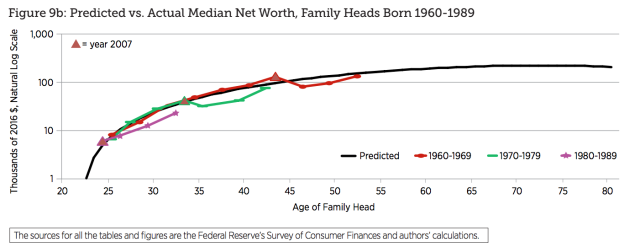
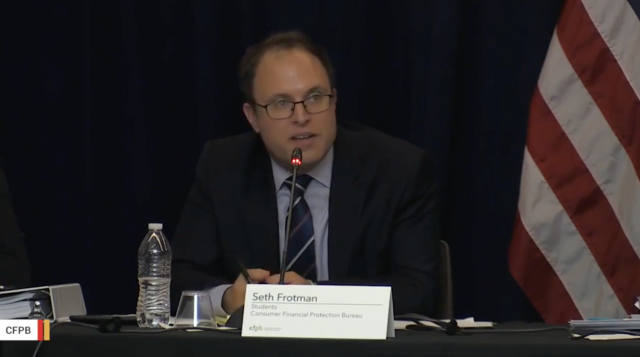

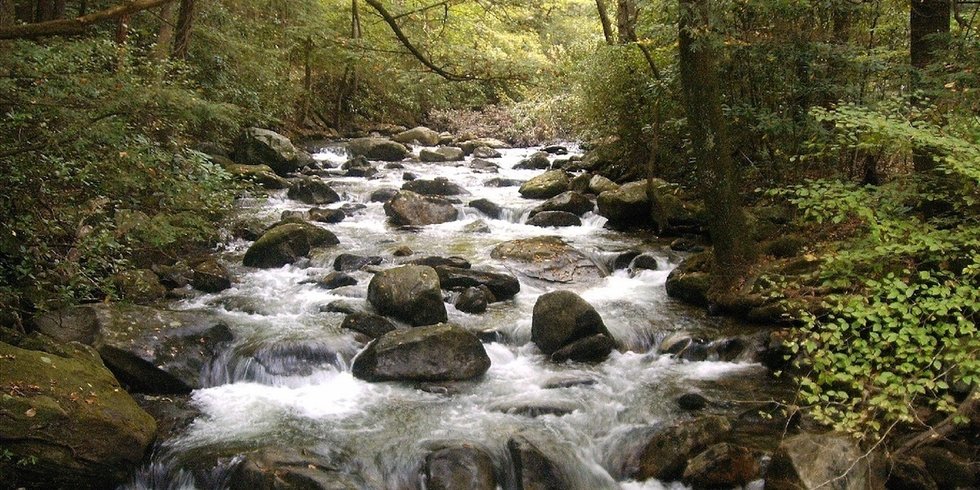 Jones Gap State Park in Greenville County, South Carolina.
Jones Gap State Park in Greenville County, South Carolina. 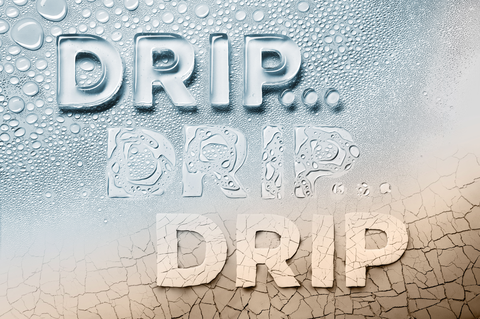


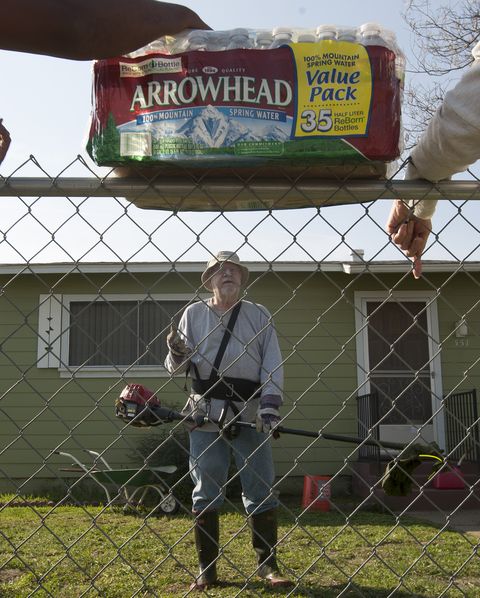

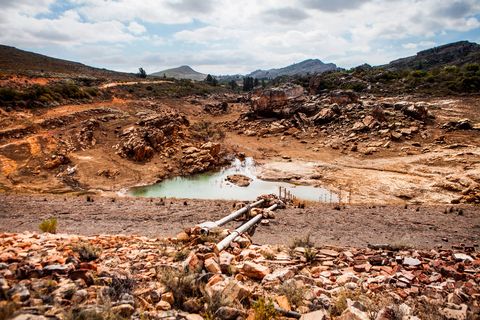
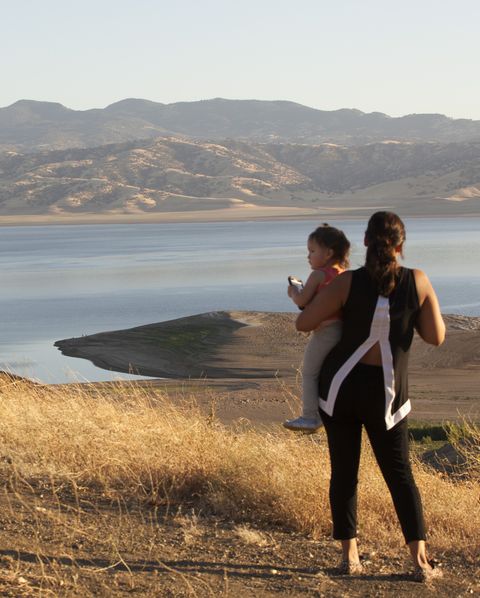
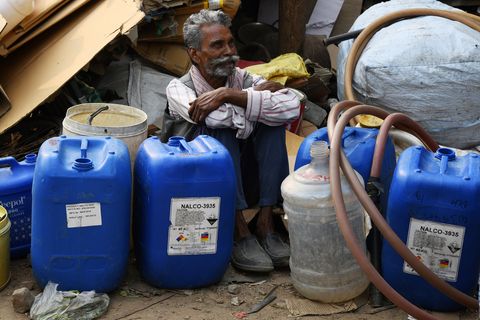


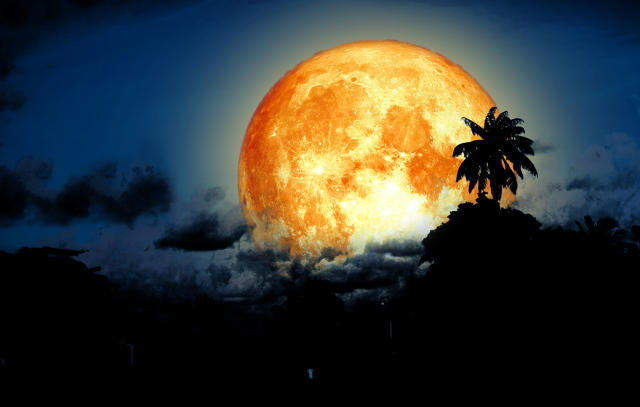












/cdn.vox-cdn.com/uploads/chorus_image/image/60979183/967860004.jpg.0.jpg)
/cdn.vox-cdn.com/uploads/chorus_asset/file/8669621/trump_pruitt_zinke_perry.jpg)
/cdn.vox-cdn.com/uploads/chorus_asset/file/12417557/821728346.jpg.jpg)